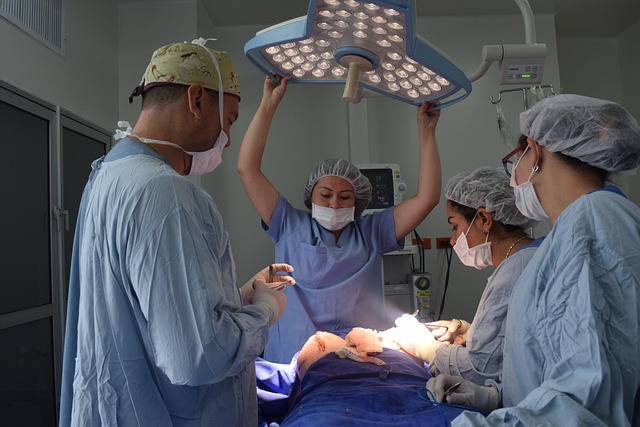Tummy Tuck Guide: Benefits, Risks, and Recovery
Considering a tummy tuck (abdominoplasty)? This clear guide explains who benefits most, what the procedure involves, potential complications, and a realistic recovery timeline. Learn how a tummy tuck can reshape your midsection, tighten muscles, and boost confidence, plus what to expect before and after surgery.

A tummy tuck, medically known as abdominoplasty, is a cosmetic surgery that removes extra skin and fat from the abdomen while repairing and tightening the underlying muscles. It can create a smoother, firmer midsection for people who haven’t achieved desired results through diet and exercise. Below is an overview of who might benefit, the advantages, possible complications, how the surgery is done, and what recovery typically looks like.
Who is a suitable candidate?
A tummy tuck is designed for people whose abdominal appearance is affected by excess skin, fat, or weakened muscles rather than for general weight loss. Common candidates include:
- Women who have had multiple pregnancies and notice stretched or separated abdominal muscles and loose skin.
- Individuals who have achieved significant weight loss and are left with residual loose skin around the midsection.
- People whose abdominal muscles have weakened due to aging or inherited traits.
- Those with persistent skin sagging or scarring after previous abdominal surgeries.
It is important to understand that abdominoplasty is not a substitute for losing weight. Candidates should be close to their ideal body weight and generally in good health before considering surgery.
Benefits of a tummy tuck
A well-performed tummy tuck can offer both aesthetic and functional improvements:
- Improved abdominal contour: Removing excess tissue and smoothing the skin produces a flatter, more sculpted midsection.
- Muscle repair and support: The surgeon can tighten separated or weakened abdominal muscles, which may improve core stability and posture.
- Reduction of excess skin: Eliminating loose, sagging skin reduces chafing and the risk of skin irritation or infections.
- Enhanced self-confidence: Many patients report higher self-esteem and more comfort wearing different clothing styles.
- Possible relief from back discomfort: Strengthening the abdominal wall can sometimes ease certain types of lower back pain by improving core mechanics.
Keep realistic expectations: results vary depending on anatomy, surgical technique, and post-op care.
Risks and potential complications
All surgeries carry risks. Discuss these thoroughly with a board-certified plastic surgeon so you can weigh benefits and hazards. Potential issues include:
- Infection
- Bleeding or hematoma
- Delayed wound healing or wound separation
- Noticeable or unfavorable scarring
- Skin or fat necrosis (localized tissue loss)
- Seroma (fluid collection under the skin)
- Numbness or altered skin sensation that may be temporary or permanent
- Asymmetry or irregular body contours
- Blood clots, including deep vein thrombosis (DVT)
- Complications related to anesthesia
Selecting an experienced, board-certified surgeon and following pre- and post-operative instructions carefully will reduce, but not eliminate, these risks.
How the procedure is performed
Abdominoplasty is usually done under general anesthesia and can take two to five hours depending on complexity. A typical full tummy tuck follows these steps:
- A horizontal incision is made low across the abdomen, typically from hip to hip.
- A separate incision is often created around the navel to reposition it appropriately after tissue removal.
- Skin and fat are lifted to expose the abdominal muscles.
- The surgeon tightens and repairs the separated or weakened abdominal muscles.
- Excess skin and fat are trimmed away.
- The navel is repositioned and all incisions are sutured closed.
Variations include the mini tummy tuck, which addresses lower abdominal laxity with a smaller incision, and the extended tummy tuck, which removes more tissue and may address the flanks.
| Procedure Type | Typical Cost Range (USD) |
|---|---|
| Mini tummy tuck | $4,000 - $8,000 |
| Full tummy tuck | $6,000 - $15,000 |
| Extended tummy tuck | $8,000 - $20,000 |
Costs vary by region, surgeon experience, facility fees, and whether additional liposuction or procedures are combined. Please consult your surgeon for an accurate estimate.
Recovery timeline and what to expect
Recovery from abdominoplasty is gradual. Individual healing varies, but many patients follow a similar timeline:
- Immediate post-op: Most people stay in a surgical facility or hospital for 24–48 hours. Pain, swelling, and bruising are expected during this time.
- First week: Expect significant discomfort. You will likely wear a compression garment and may have drains to remove fluid. Strict rest and limited movement are advised.
- Weeks 2–4: Gradual return to light daily activities as swelling decreases. Continue wearing compression garments and avoid lifting heavy objects.
- Weeks 4–6: Many patients can return to work (if not physically demanding) and slowly reintroduce light exercise per the surgeon’s guidance.
- Months 2–3: Swelling continues to resolve and surgical results become clearer.
- 6 months to 1 year: Scars mature and fade, and final contours are typically evident.
Follow all wound-care instructions, attend follow-up visits, avoid smoking, and adhere to activity restrictions to promote optimal healing. Immediate contact with your surgeon is important if you notice signs of infection, significant bleeding, or sudden shortness of breath.
Making an informed decision
Before committing to surgery, schedule consultations with a board-certified plastic surgeon to discuss goals, technique options, realistic outcomes, and personalized risks. Bring medical history, questions about scarring and recovery, and be prepared to review before-and-after photos.
This procedure can offer meaningful physical and psychological benefits for the right candidate, but it requires careful planning, appropriate expectations, and diligent post-operative care.
This article is for informational purposes only and should not be considered medical advice. Please consult a qualified healthcare professional for personalized guidance and treatment.






